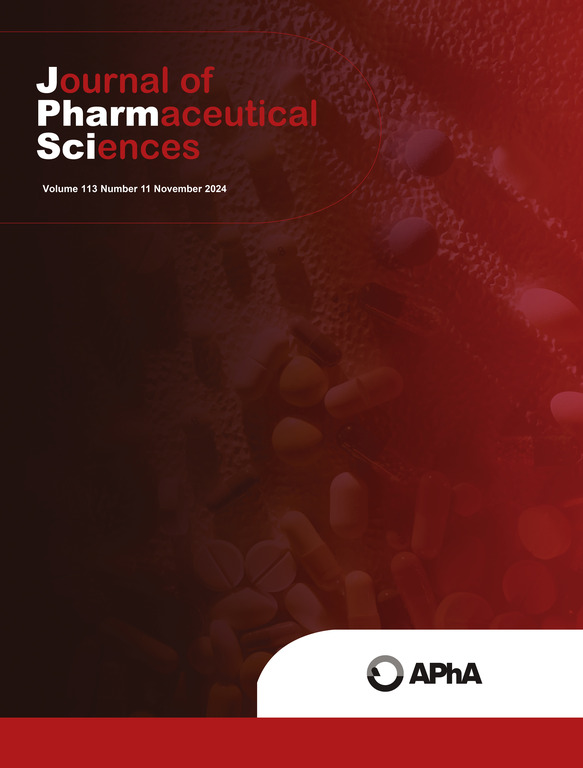Guiding and evaluating molecular modifications of aspirin for preferential COX-2 inhibition using machine learning
IF 3.8
3区 医学
Q2 CHEMISTRY, MEDICINAL
引用次数: 0
Abstract
Aspirin is a classic non-steroidal anti-inflammatory drug (NSAID) that unfortunately carries an inherent risk of gastrointestinal side effects. This is due to its simultaneous action on both COX-1 and COX-2 enzymes, where the former is associated with adverse reactions and the latter with therapeutic effects. This study begins by constructing a compound database that acts on COX-1 and COX-2, followed by an analysis of the ligand-target binding differences from a macroscopic to microscopic perspective, using 12 types of ADME properties and the X-ray diffraction structures of aspirin-COX-1/2 complexes. Subsequently, we replaced the features with descriptors that describe the molecular topological structure to build predictive models for COX-1/2. Based on the binding differences, we used Chemdraw for real-time molecular modification of aspirin. Our findings suggest that increasing the molecular weight, topological polar surface area (TPSA), and partition coefficient (LogP) of the compound, while also making it more elongated, can enhance the preferential inhibition of COX-2 by aspirin. Therefore, we have modified the original aspirin by introducing carbon chains and hydroxyl groups. We designed 10 structurally modified versions of aspirin and used machine learning and molecular docking to verify their effects on the activity changes of two COX enzymes. The predictive results indicate that the modified aspirin has a stronger inhibitory effect on COX-2 and a weaker effect on COX-1. This provides a reference for the development of COX-2 selective inhibitors based on aspirin and also offers an innovative approach for computer-aided design to eliminate adverse drug reactions.

利用机器学习指导和评估阿司匹林分子修饰对COX-2的优先抑制作用
阿司匹林是一种经典的非甾体抗炎药(NSAID),不幸的是,它具有胃肠道副作用的固有风险。这是由于它同时作用于COX-1和COX-2酶,前者与不良反应有关,后者与治疗作用有关。本研究首先构建作用于COX-1和COX-2的化合物数据库,然后利用12种ADME性质和阿司匹林-COX-1/2配合物的x射线衍射结构,从宏观到微观角度分析配体-靶标结合差异。随后,我们将特征替换为描述分子拓扑结构的描述符,以构建COX-1/2的预测模型。基于结合差异,我们使用Chemdraw对阿司匹林进行实时分子修饰。我们的研究结果表明,增加化合物的分子量、拓扑极性表面积(TPSA)和分配系数(LogP),同时使其更细长,可以增强阿司匹林对COX-2的优先抑制作用。因此,我们通过引入碳链和羟基对原阿司匹林进行了修饰。我们设计了10个阿司匹林的结构修饰版本,并使用机器学习和分子对接来验证它们对两种COX酶活性变化的影响。预测结果表明,改性阿司匹林对COX-2的抑制作用较强,对COX-1的抑制作用较弱。这为基于阿司匹林的COX-2选择性抑制剂的开发提供了参考,也为计算机辅助设计消除药物不良反应提供了一种创新方法。
本文章由计算机程序翻译,如有差异,请以英文原文为准。
求助全文
约1分钟内获得全文
求助全文
来源期刊
CiteScore
7.30
自引率
13.20%
发文量
367
审稿时长
33 days
期刊介绍:
The Journal of Pharmaceutical Sciences will publish original research papers, original research notes, invited topical reviews (including Minireviews), and editorial commentary and news. The area of focus shall be concepts in basic pharmaceutical science and such topics as chemical processing of pharmaceuticals, including crystallization, lyophilization, chemical stability of drugs, pharmacokinetics, biopharmaceutics, pharmacodynamics, pro-drug developments, metabolic disposition of bioactive agents, dosage form design, protein-peptide chemistry and biotechnology specifically as these relate to pharmaceutical technology, and targeted drug delivery.

 求助内容:
求助内容: 应助结果提醒方式:
应助结果提醒方式:


